[China Aluminum Industry Network] Executive Summary: Aluminum alloy formwork (scaffolding) as a modern green building construction machinery appliance and material is considered to be the future direction of green building development. This article briefly introduces the development of modern architectural formwork (scaffolding), compares the advantages and disadvantages of the traditional formwork and the new generation of green building aluminum alloy formwork, and discusses the characteristics and technical requirements of the green building aluminum profile profile and points out the green The industrial mass production of architectural aluminum profiles is of great significance.
Keywords: green building, aluminum alloy formwork, aluminum alloy formwork profile, characteristics and technical difficulty, industrialization, mass production 1. Preface The construction industry has always been a leading pillar industry in many countries, and it has been a development of the national economy, an improvement in the standard of living of the people, and a society. Progress in civilization has played a particularly important role. For a long time, building materials and construction machinery equipment and materials, in addition to basic materials such as cement, sand and stone bricks, are mainly wood, plastics and steel. In recent years, the concept of “green building†has been proposed by various governments and academics. The industry and industry have done a lot of effective work in finding and developing "green building" construction machinery equipment and materials and green building decoration materials and structural materials, and have made breakthrough progress. Lightweight aluminum material with a series of excellent characteristics as an ideal "green building" material is becoming more and more favored by the construction industry. There is a great tendency to replace wood with aluminum, substitute aluminum, and substitute aluminum for steel. Aluminum alloy doors and windows, curtain walls, fences and other decorative materials have long been widely used is an indisputable fact. Aluminum alloy formwork and scaffolding as green building construction machinery and materials and aluminum alloy structural materials as green building materials in place of wood and steel in recent years Ten years has also achieved significant development and is considered to be the development direction of the future of green buildings.
2. Overview of Development of Aluminium Alloy Formwork in Green Buildings The green building Aluminium formwork system was born earlier in the United States and is a new generation of green formwork technology. The aluminum alloy formwork system is mainly composed of a formwork system, a support system, a fastening system, an attachment system, etc. It can be widely applied to various fields of reinforced concrete building structures. The aluminum alloy formwork system has the advantages of light weight, convenient assembly and disassembly, high rigidity, large board surface, less joints, good stability, high precision, smooth and clean cast concrete, long service life, many turnover times, good economy, and high recovery rate. High, fast construction progress, high construction efficiency, safe and tidy construction site, good construction image, low dependence on machinery, wide application range, etc.
After decades of development and improvement, the green building aluminum alloy formwork system technology has been basically mature and its application is more extensive. So far, dozens of countries such as the United States, Canada, Japan, South Korea, Dubai, Mexico, Malaysia, Singapore, Brazil, and India have generally adopted in construction. In recent decades, China's coastal provinces and cities as well as Hong Kong, Macao and Taiwan have gradually begun to promote the use of aluminum alloy formwork systems, and have achieved considerable economic and social benefits.
In the early 1970s, China’s building structure was dominated by brick-concrete structures. The formwork used for building construction was mainly wood formwork. Since the 1980s, various new structural systems have been promoted under the “steel-wood substitute†policy. The continuous appearance of reinforced concrete structures has rapidly increased and steel formwork has begun to prevail in construction. Since the 1990s, China's building structural system has undergone great development. Along with large-scale infrastructure construction, highways, railways, Urban rail transportation and the construction of high-rise buildings, super high-rise buildings and large-scale public buildings have put forward new requirements for the construction technology of formwork and scaffolding. The pattern of combined steel formwork in our country has been broken and gradually transformed into a pattern in which multiple templates coexist, and new types of templates develop rapidly.
Wood formwork: Formwork made of wood, poplar formwork and pine formwork are common. The advantage is that the weight is relatively lighter, the price is relatively cheaper, and there is no limitation of the module when used, and processing can be performed as required. The disadvantage is that it is used less often, there is a certain loss during the processing, and the destruction of resources is great.
Steel stencil: Template made of pressed steel plate. The advantages are high strength and turnover. Disadvantages are heavy weight, inconvenient use, corrosion, and high cost.
Plastic formwork: A building form manufactured using PE waste plastics and fly ash, calcium carbonate, and other filler extrusion processes. The advantages are smooth surface, no moisture absorption, no mildew, acid and alkali resistant, and not easy to crack. The cost is much lower than the steel plate. The disadvantages are that the strength and rigidity are too small, the coefficient of thermal expansion is large, and they cannot be recycled and pollute the environment.
Aluminium formwork system: A new generation building formwork made of aluminum sheet or profile. It is suitable for reinforced concrete structures because of its light weight, high number of turnovers, high load-bearing capacity, wide application range, convenient construction and high recovery value. each field.
The widely used wood (bamboo) plywood formwork, steel formwork and other formwork systems have problems such as low technical content, low construction efficiency, waste of labor, and serious pollution, which are far from the green construction and energy conservation and emission reduction advocated by a harmonious society. The formwork industry is eager to see the use of a high-efficiency and low-cost template system. As a new generation of green template technology, aluminum alloy formwork system will surely lead the development direction and future of the formwork industry.
3. Characteristics and technical requirements of aluminum building formwork profiles for green buildings. Aluminum building formwork (and scaffolding) for green buildings is mainly manufactured from extruded profiles (partial pipes and rods). The main features and technologies of green building aluminum profiles are: Requirements are as follows:
(1) Many varieties, a wide range of specifications, complex shapes, large external and external dimensions, and large differences in wall thickness. Most of them are special shaped hollow profiles, but also large flat-width thin-walled solid profiles with large aspect ratios. Large semi-hollow sections and special pipes and rods require a large degree of difficulty, high technical content, and very difficult to produce in batches. Table 1 shows the information of some green building stencil extrusion products.
(2) Adopting a monolithic composite structure, small and medium-sized sections of different shapes are combined to form a large-scale monolithic structural section, some with a width of more than 600 mm, a ratio of width to thickness of 100, and a tongue ratio of 5, requiring the use of a large extruder of 7,000 tons or more to design and fabricate special structures. The mold can be formed. See Figure 1, Figure 2 and Table 2 in Table 3.
(3) Good overall performance is required, both with a certain strength (b300 MPa) and good weldability, wear resistance, corrosion resistance, and cold punchability. Therefore, alloy composition must be optimized to optimize extrusion. Pressure and heat treatment processes improve and enhance the organization and performance to meet the requirements. The requirements for alloy composition, ingot quality, mold design and production technology, extrusion process and heat treatment process are put forward. The technical difficulty is very great and a lot of research and test work is needed.
(4) The template needs to be used repeatedly. It is required that the dimensional precision and shape-position tolerance are very strict in order to be convenient for loading and unloading. Therefore, the precision of the profile is required to be controlled at an ultra-high-precision level. This is to mold quality, extrusion and precision quenching process. Made great demands.
(5) Industrial mass production is required. Therefore, higher requirements are placed on the equipment, ingot quality, mold technology, extrusion and heat treatment processes. In particular, high demands are placed on the service life of the mold, and the requirements are higher than those of general molds. Life is increased by 2-3 times.
4. Significant Significance of Industrial Mass Production of Aluminum Formwork Profiles in Green Buildings (1) Green Building Aluminum alloy formwork profiles are important components and ideal lightweight materials for modern green building construction machinery, and the formation of industrialized mass production accelerates industrialization in China. The process of urbanization is of great significance in upgrading the modernization, light weight, and green recycling economy of green construction machinery. At the same time, it also has a role in accelerating the transformation of product structure and expanding the application of aluminum alloy extrusion materials.
(2) The replacement of building formwork materials with aluminum substitutes for wood, aluminum substitutes for plastics, aluminum substitute steels, and the modernization of building construction machinery have revolutionary significance. Compared with other materials, the excellent characteristics of aluminum alloy templates are shown in Table 4. Table 5, Table 6.
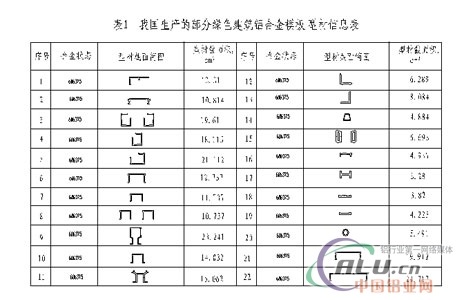
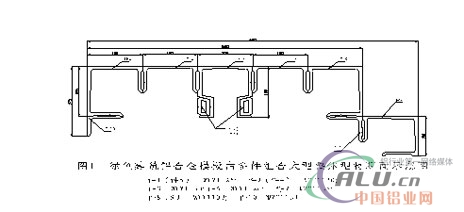
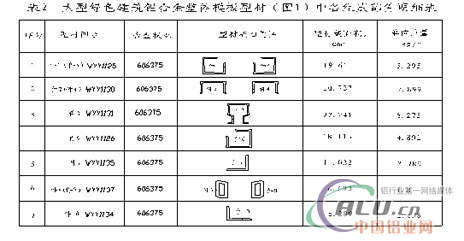
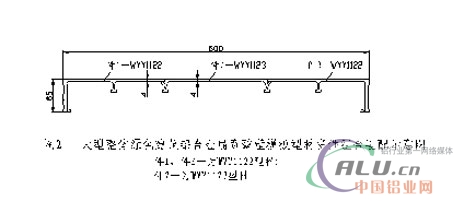

N Series Ground Screw/Ground Screw Pile,ground Spike,Ground Screw pile foundation , Screw Pile :Threaded Bolts fasten, No Flanges,one ,three or four bolts fixed .Including not galvanized ground screw,Hot Dip Galvanized Ground Screw.
Available in the following diameters and length :
Diameter :68 mm,76 mm,89 mm,114 mm ,140mm,219mm
Length of N Ground Screw pile (mm) : 800,1000,1200,1500,1800,2000,2500,3000,5000 and requested length
Nut aperture for N series ground screw : 3-M 10/12/14/16
Surface treatment : Hot Dip Galvanized ,DIN EN ISO 1461-1999 ,average thickness of coating more than 80 micron
Range of Application : Solar power system,fence, timber construction ,farm and garden fence ,umbrella basement ,advertising board and banner ,lighting pole &
Production charting : Cutting pipe to he standard length ,forming the pipe according to design ,welding and assemble blade,flange,nut , acid pickling ,hot dip galvanize ,QC, Packing ,shipments

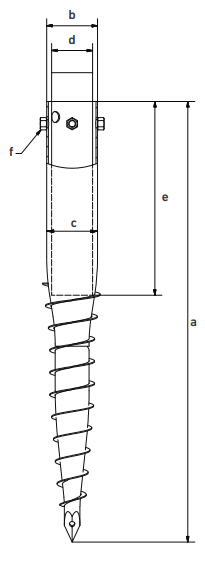
N Series Ground Screw
Ground Screw,Helix Ground Screw,Ground Screw Pile,Screw Pile,Ground Foundation, HDG Ground Screw Post Pile, Ground Screw Pile,Hot Dip Galvanized Ground Screw
BAODING JIMAOTONG IMPORT AND EXPORT CO., LTD , http://www.chinagroundscrew.com